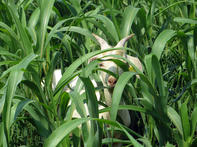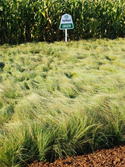Pastures are plants that are sown or planted by a farmer to feed animals. Pasture plants can be a single plant or a mixture of grasses and legumes. Legumes are plants that can use nitrogen from the air to fix nitrogen into the soil with the help of nodular bacteria on their roots.

Putting nitrogen back in the soil benefits other companion plants, growing with the legumes. The cheapest way to use pastures is to let animals graze it directly from the field when there are no natural fodder plants available.
The best timing is, of course, to have pastures available when natural fodder is limited or of poor quality. Alternatively, pastures can be harvested and stored in the form of hay or silage. So, both the timing of pasture production and the mix of pasture plants are important when establishing pastures.
Factors that Influence the Planting of Pastures

Before choosing which crops to plant for a pasture, determine the factors that will influence the planting time and species of pasture crops.
Rainfall and humidity Will pastures be planted in a summer or winter rainfall area? What is the total rainfall for the season? If rainfall is low, will you be able to irrigate? If not, choose pasture plants suitable for dryland cultivation.
Temperature Pasture grasses are classified into two groups according to the season of their best growth rate - choose between cool-season grasses or warm-season grasses. Legumes grow best in spring. Therefore it is important to know the area’s maximum and minimum temperatures and if frost occurs.
Site Is the planting site steep and the soil prone to erosion due to water runoff and wind? Does it slope northwards (sunnier) or southwards (cooler)?
Soil type Does the farm have light sandy soils or wet and heavy clay soil? Is the soil deep or shallow? Does it retain moisture well or do water and nutrients leach out easily? For example, Napier grass (Penisetum purpureum) and bana grass (P. purpureum x P. americanum) grow well on waterlogged soils. In contrast, the legume serradella can thrive in poor sandy soils.
Irrigation Will pastures be planted during a rainfall period? Is water available for irrigation? If so, which type of irrigation will be used? Do you have irrigation equipment? Popular dryland pastures in South Africa are weeping love grass or ‘oulandsgras’ in Afrikaans (Eragrostis curvula), also Smuts finger grass and foxtail buffalo grass or ‘bloubuffelsgras’ in Afrikaans.
For which season? For which months would pastures be needed? In summer/winter/autumn/springtime or a combination of seasons? Will it be grazed or harvested and stored?
Is fertilisation needed? It is essential to test the soil before applying fertiliser to determine which nutrients are absent. Correct fertiliser application can increase pasture growth and quality as well as improve a pasture’s recovery after grazing and resilience to drought. The best effect from fertiliser is seen on good soil, not on eroded or poor soils, which are often prone to leaching of nutrients. Some pasture plants need specific fertilisation such as lucerne, which needs adequate levels of phosphorus.
End use of pasture? Will animals be put out to graze? Will it be used for grazing, hay or silage? Silage is fresh pasture cut, compacted and left to ferment. Pastures can also be used for foggage - second grazing after pasture has been cut/grazed - or haylage - similar to silage but with lower moisture content and less fermentation.
For which animal? Will pastures be used for animals such as cattle, sheep, goats or a combination of cattle/sheep/goats, horses, alpacas, rabbits or even poultry such as free-range chickens? What will be the age and production stage of the animal? For example, will it be used for dairy production animals, feeding of young animals or as a maintenance feed for adult animals?
By Marinda Louw